
by Admin | Oct 20, 2024 | News
Are you looking for the best vacation? Look no further than Costa Rica, a tropical paradise that offers exciting activities and natural wonders year-round. Whether you’re a thrill-seeker craving adrenaline-pumping adventures or a nature enthusiast yearning to explore lush rainforests, Costa Rica has it all. Knowing the best time to visit Costa Rica can enhance your experience, ensuring you make the most of its diverse ecosystems and vibrant culture.
But when is the best time to visit Costa Rica? Well, the answer depends on what you’re seeking. If you want to experience Costa Rica’s abundant wildlife and witness the magical nesting of sea turtles, the rainy months from May to November are ideal. On the other hand, if you prefer clear skies for outdoor activities like hiking, ziplining, and surfing, the dry months from December to April are recommended.
No matter when you decide to visit, Costa Rica promises endless opportunities for adventure. Exploring the rugged landscapes of Arenal Volcano National Park and diving into the pristine turquoise waters of Manuel Antonio National Park guarantee you an experience like no other.
So pack your bags and get ready for an unforgettable journey through Costa Rica’s natural wonders.
Climate and Seasons
This country is renowned for its diverse climate, which can vary significantly from one region to another due to its unique geography and elevation. Generally, the country experiences two main seasons: the dry season and the rainy season. The dry season typically runs from December to April and is characterized by sunny skies, lower humidity, and little rainfall, making it the peak time for tourism. Conversely, the rainy season, which spans from May to November, is marked by afternoon showers and higher humidity but is essential for maintaining the lush landscapes that Costa Rica is famous for.
The variation in climate also introduces microclimates across different regions, from the humid tropical coasts to the cooler highlands. For instance, the Caribbean coast experiences rainfall year-round, while the Pacific side has a more defined dry season. This significant climate diversity allows visitors to choose from various activities and landscapes, depending on their preferences and the time of year they plan to visit. Understanding these climatic differences can help travelers make informed decisions about when to embark on their Costa Rican Vacation.
Moreover, the time of year also influences wildlife sightings and natural phenomena. Certain months provide excellent opportunities for spotting specific species, such as the vibrant scarlet macaws or the elusive jaguar. By learning about these seasonal variations, visitors can tailor their itineraries to maximize their chances of experiencing Costa Rica’s rich biodiversity, ensuring an unforgettable time.
Peak Tourist months in Costa Rica
The peak tourist months in Costa Rica occur during the summer, particularly from mid-December through April, coinciding with the holiday and spring break. During this time, travelers flock to popular destinations such as Manuel Antonio, Arenal Volcano, and Monteverde, drawn by the promise of beautiful weather and an abundance of outdoor activities. The influx of visitors leads to a vibrant atmosphere, with numerous festivals and events taking place, showcasing the country’s rich culture and hospitality.
However, this surge in tourism does come with its challenges. Accommodation prices typically rise, and popular attractions can become crowded, making it essential for travelers to book in advance. Despite these challenges, the appeal of clear skies and warm temperatures makes this time of year highly desirable for many adventurers seeking to explore Costa Rica’s natural wonders. Planning your trip around this peak season can guarantee a lively experience filled with opportunities for exploration and social interaction.
Additionally, the peak season also presents a unique opportunity to engage in various organized tours and activities, such as white-water rafting, ziplining, and guided wildlife tours. Many local businesses offer special promotions and packages specifically designed for the high season, enabling travelers to enjoy a wide range of experiences. While the crowds may be a drawback for some, the lively atmosphere and abundance of options create an exhilarating environment for those eager to soak up all that Costa Rica has to offer.
Off-Peak Seasons in Costa Rica
Visiting Costa Rica during the off-peak season, which typically spans from May to November, can offer a different yet equally rewarding experience. This period, known as the winter, features fewer tourists, allowing for a more personal and intimate encounter with the country’s natural beauty. The reduced crowds mean that travelers can explore popular attractions without the hustle and bustle, providing a more serene atmosphere to connect with the environment.
While the winter does bring daily showers, these typically occur in the afternoon and can help create stunning landscapes filled with lush greenery and vibrant flora. This time is also an excellent time for photography enthusiasts, as the rain often gives way to breathtaking sunsets and dramatic skies. Moreover, the lower prices for accommodations and tours during this time can make traveling more budget-friendly, allowing visitors to stretch their dollars further while enjoying all that Costa Rica has to offer.
Wildlife enthusiasts will find the off-peak season particularly rewarding. Many species engage in unique behaviors during this time, such as sea turtle nesting along the Pacific coast from July to October. Birdwatchers will also delight in the opportunity to spot migratory species that flock to the region during the rainy months. By visiting during the off-peak season, travelers can immerse themselves in the vibrant ecosystems that thrive in Costa Rica, making for a truly unforgettable vacation.
Factors to Consider When Planning Your Trip
When you plan a trip during the best time to visit Costa Rica, you should consider several factors to ensure a memorable experience. First and foremost is the purpose of your visit. Whether you seek honeymoon, relaxation, or cultural immersion, understanding your goals will help determine the best time for your visit. For example, outdoor seekers may prefer the dry season for activities like ziplining and hiking, while wildlife enthusiasts might opt for the rainy season to witness unique animal behaviors.
Another essential factor is budget. As previously mentioned, the peak months can bring higher prices for accommodations and activities, so travelers should consider their financial constraints when planning their trip. Off-peak travel can provide significant savings, but it’s essential to weigh the pros and cons, such as potential weather-related disruptions. Additionally, researching special deals, discounts, or packages during both peak and off-peak periods can help you find options that fit your budget while still offering an exciting experience.
Finally, we should consider personal preferences for weather and climate. Some travelers may thrive in the sunny, dry conditions of the peak season, while others may enjoy the refreshing rains of the off-peak months. Understanding your comfort level with humidity and rain can help dictate the best time for your visit. By considering these factors, you can create a travel plan that aligns with your desires and ensures an unforgettable Costa Rican adventure.
Best Time to Visit Costa Rica for Outdoor Activities and Adventure
For outdoor enthusiasts, the best time to visit Costa Rica largely depends on the specific activities they wish to engage in. The dry season, running from December to April, is ideal for activities such as hiking, ziplining, and surfing, as the weather is typically straightforward and sunny. Popular destinations like Arenal Volcano and Monteverde Cloud Forest offer excellent trails and stunning views, making them prime spots for hiking during these months. Additionally, the Pacific coast sees optimal surfing conditions, attracting surfers from around the world to its renowned beaches.
However, outdoor seekers shouldn’t discount the rainy season, particularly for activities like white-water rafting. The increased rainfall during this time can lead to more thrilling river conditions, providing an exhilarating experience for those seeking an adrenaline rush. Moreover, the lush landscapes during the rainy months create an unparalleled backdrop for outdoor activities, making every hike or adventure feel more immersive and vibrant.
For those interested in hiking, visiting during the transitional months of May and November can provide a unique experience. These months often see fewer tourists and a mix of sunny days with occasional rain, allowing for enjoyable hikes with stunning views without the typical crowds. Ultimately, the best time to visit Costa Rica for outdoor activities will depend on individual preferences and the specific adventures one wishes to pursue. Still, Costa Rica offers something for every type of adventurer throughout the year.
Popular Adventure Activities during the Best Time to Visit Costa Rica
Costa Rica is a haven for adventure enthusiasts, offering an impressive array of activities that cater to a variety of interests and skill levels. One of the best activities is ziplining through the lush canopy of the rainforest, allowing visitors to soar high above the ground while taking in breathtaking views of the surrounding landscape. Destinations like Monteverde and Arenal are renowned for the best ziplining courses, providing thrill-seekers with an unforgettable experience that combines excitement and natural beauty.

Another exhilarating adventure is white-water rafting, which is especially popular on the Pacuare River. With rapids ranging from Class II to Class V, this river offers options for both beginners and seasoned rafters. Navigating through stunning canyons and lush rainforests provides an adrenaline-pumping experience while also presenting opportunities for wildlife sightings along the riverbanks. Many tour operators offer guided excursions, ensuring safety and enjoyment for all participants.
Surfing is another must-try activity, particularly along the Pacific coast. Destinations like Tamarindo and Jaco are famous for their consistent waves and surf-friendly beaches, attracting surfers of all skill levels. Whether you’re a beginner looking for lessons or an experienced surfer seeking challenging breaks, the diverse coastline of Costa Rica has something for everyone. In addition to surfing, many coastal areas offer opportunities for snorkeling, scuba diving, and other water sports, making it easy to fill your days with adventure.
Wildlife and Nature Experiences by Season
Costa Rica is famous for its incredible biodiversity and offers unique wildlife experiences that vary by season. During the rainy season, particularly from May to October, visitors have the opportunity to witness spectacular natural events, such as the nesting of sea turtles on the Pacific coast. Various species, including the Olive Ridley and Leatherback turtles, make their way to the beaches to lay their eggs, providing an unforgettable sight for those who participate in guided nesting tours.
The rainy months also bring vibrant flora and fauna, making it an excellent time for birdwatching. Migratory species, such as the colorful hummingbirds and the majestic Scarlet Macaw, flock to Costa Rica during this season, offering birdwatchers a chance to see these stunning creatures in their natural habitat. The lush surroundings during the rainy season create an ideal environment for spotting wildlife, including monkeys, sloths, and numerous reptiles that thrive in the vibrant ecosystem.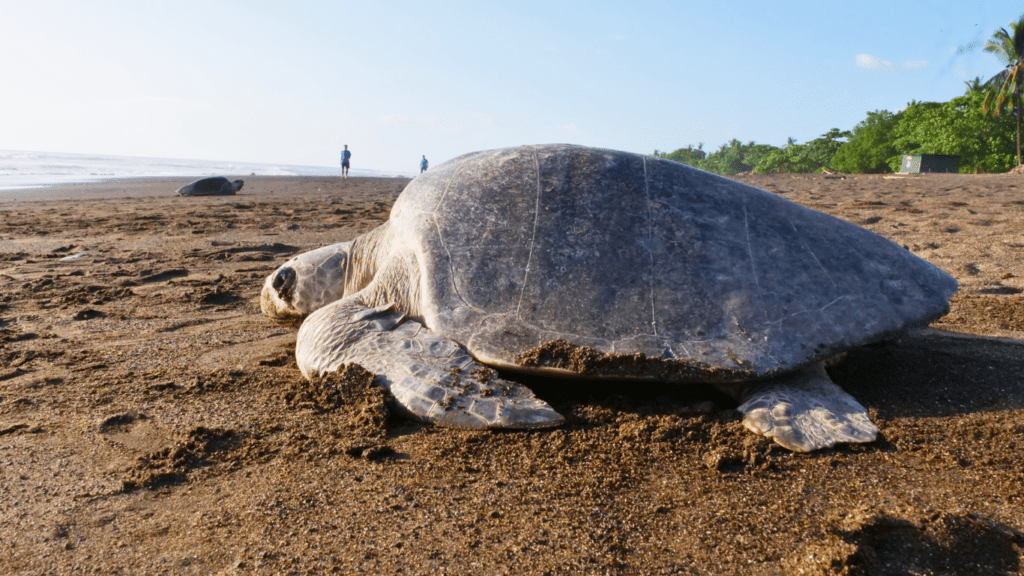
In contrast, the dry season offers a different perspective on wildlife viewing. With less foliage, spotting animals becomes more accessible, and early morning or late afternoon excursions can lead to incredible encounters with various species. National parks and reserves, such as Manuel Antonio and Corcovado, become popular hotspots for wildlife enthusiasts during these months. This season is also ideal for hiking and exploring diverse ecosystems, ensuring that nature lovers can experience the best of Costa Rica’s natural wonders throughout the year.
Planning Your Itinerary Based on the Best Time to Visit Costa Rica
When planning your itinerary for Costa Rica, it’s crucial to align your activities and destinations with the best times to visit based on your interests. Start by identifying the primary activities you want to experience, whether it’s hiking in the cloud forests, surfing the waves, or engaging in wildlife spotting. Researching the ideal months for these activities will help you determine your travel dates and ensure you get the most out of your journey.
Once you have a clear idea of when to visit, consider the geographical diversity of Costa Rica. The country is small yet packed with varying ecosystems, so it’s beneficial to plan your route to minimize travel time between destinations. For instance, if your trip falls during the dry season, you might want to focus on the Pacific coast for beach activities, while the rainy season may lead you to the lush interior for rainforest experiences. This strategic planning can enhance your adventure by allowing you to explore multiple regions and activities without feeling rushed.
Lastly, keep flexibility in your itinerary to adapt to changing weather conditions or unexpected discoveries. Costa Rica is known for its natural beauty, and allowing yourself time to explore off the beaten path can lead to the most memorable experiences. Incorporating rest days and spontaneous adventures will ensure you return from your trip with a wealth of stories and memories, regardless of the season in which you visit.
Conclusion and Final Tips for a Memorable vacation in Costa Rica
In conclusion, the best time to visit Costa Rica ultimately depends on your preferences for weather, activities, and wildlife experiences. Whether you choose to travel during the bustling dry season or the serene rainy season, you are guaranteed to encounter breathtaking landscapes, rich biodiversity, and thrilling adventures. By understanding the climate, peak and off-peak seasons, and planning your itinerary accordingly, you can create an unforgettable journey that caters to your interests and desires.
As you prepare for your adventure in Costa Rica, consider practical tips such as packing appropriate clothing for various weather conditions, booking accommodations in advance during peak times, and remaining flexible in your travel plans. Connecting with local guides and tour operators can also enhance your experience, providing valuable insights and expertise that will allow you to discover hidden gems throughout the country.
Ultimately, the spirit of Costa Rica lies in its warmth, hospitality, and the stunning natural wonders that await you. With careful planning and an open heart, you’re bound to create lasting memories and enjoy the adventure of a lifetime in this tropical paradise. So pack your bags and get ready to immerse yourself in the captivating beauty and vibrant culture of Costa Rica!
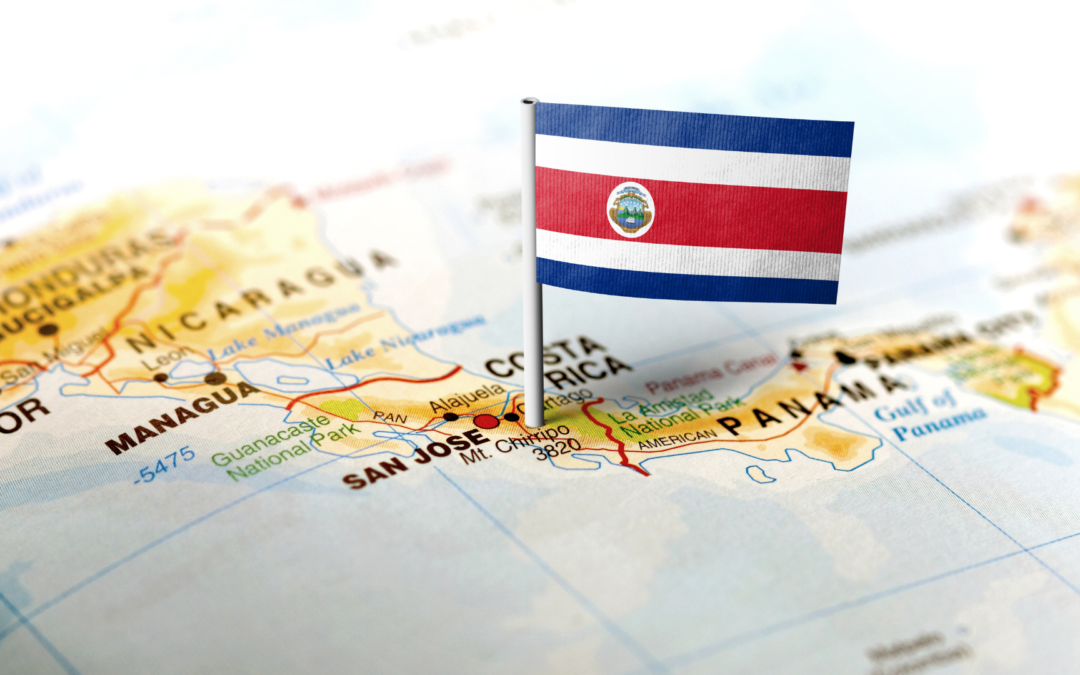
by Admin | Aug 7, 2024 | News
Are you planning a trip to Costa Rica and wondering which airlines fly to Liberia Airport? Look no further—we’ve got the ultimate guide to help you choose the best one for your next adventure. Whether you’re seeking a budget-friendly option or prefer a more luxurious experience, there are plenty of airlines that service this popular destination.
With its stunning beaches, lush rainforests, and abundant wildlife, Costa Rica is no wonder it’s a dream vacation spot for many travelers. But getting there has always been challenging. From major international carriers to regional airlines, Liberia Airport offers a range of flight options to suit every budget and itinerary. As you plan your trip, it’s also worth learning about the local culture and customs in Costa Rica, which can enhance your travel experience and help you connect with the destination and its people.
In this comprehensive guide, we’ll dive into the top airlines that fly to Liberia Airport, highlighting their routes, ticket prices, and onboard amenities. Whether you’re flying from North America, Europe, or beyond, we’ll help you find the perfect airline to make your journey as seamless and enjoyable as possible. So sit back, relax, and let us take you through the airlines that will whisk you away to a tropical paradise.
Importance of choosing the right airline
When planning a trip to Liberia Airport in Costa Rica, choosing the right airline is crucial to ensure a smooth and enjoyable journey. The airline you select can significantly impact various aspects of your travel experience, from the cost of your ticket to the in-flight amenities and services. By carefully considering the options, you can find an airline that aligns with your travel preferences, budget, and needs.
One of the primary factors to consider when selecting an airline is the flight routes and destinations they offer. Liberia Airport serves as a gateway to the stunning Guanacaste region of Costa Rica, and different airlines may offer varying levels of connectivity to this destination. Some airlines may provide direct flights from major hubs, while others may require a layover, which can impact your travel time and overall convenience.
In addition to flight routes, the in-flight experience is another crucial aspect to consider. Airlines offer a range of amenities, such as legroom, meal options, entertainment systems, and customer service, which can significantly influence the comfort and enjoyment of your journey. Researching the specific features and services provided by each airline can help you make an informed decision and ensure that your travel to Liberia Airport meets your expectations.
Airlines that fly to Liberia Airport in Costa Rica

Liberia Airport, also known as Guanacaste International Airport, is a bustling hub that serves as the primary gateway to the northern Pacific region of Costa Rica. This airport is a popular destination for travelers seeking to explore the stunning beaches, lush rainforests, and abundant wildlife that the country is renowned for. Fortunately, a variety of airlines offer flights to Liberia Airport, providing travelers with a wealth of options to choose from.
One of Liberia Airport’s key advantages is its accessibility from various parts of the world. Major international carriers, as well as regional airlines, have recognized the growing demand for travel to this destination and have expanded their route networks accordingly. This diversity of airline options allows travelers to find the perfect fit for their travel needs, whether they’re looking for a budget-friendly option or a more premium experience. Additionally, upon arrival at Liberia Airport, travelers can easily access the main tourist destinations in Costa Rica via a variety of local transportation options, such as taxis, shuttles, and rental cars.
As you explore the airlines that fly to Liberia Airport, consider factors such as flight schedules, ticket prices, and the overall quality of the travel experience. By carefully researching and comparing the offerings of different airlines, you can make an informed decision that aligns with your travel preferences and budget, ensuring a memorable and hassle-free journey to the beautiful Guanacaste region of Costa Rica.
American Airlines: Destinations and services
American Airlines is one of the prominent carriers that offer flights to Liberia Airport in Costa Rica. As a major global airline, American Airlines has an extensive network of routes, connecting travelers from various parts of the world to this popular destination.
From the United States, American Airlines operates direct flights to Liberia Airport from several major hubs, including Miami and Dallas-Fort Worth. These direct flights are particularly convenient for travelers, as they eliminate the need for a layover and can significantly reduce travel time. Additionally, American Airlines offers a wide range of connecting flights to Liberia Airport from other domestic and international destinations, providing a flexible and comprehensive travel solution that caters to your specific travel needs.
In terms of in-flight services, American Airlines is known for its commitment to customer comfort and satisfaction. Passengers can expect a range of amenities, such as complimentary meals and beverages, personal entertainment systems, and ample legroom in select cabin classes. The airline also offers a loyalty program, AAdvantage, which allows travelers to earn and redeem miles for future travel, adding an extra layer of value to their journey and making you feel appreciated and rewarded for your loyalty.
Delta Airlines: Flights and amenities
Delta Airlines is another primary carrier that provides direct flights from the United States to Liberia Airport. As one of the largest airlines in the world, Delta offers a robust network of routes, making it a popular choice for travelers seeking to visit Costa Rica’s northern Pacific region.
From the United States, Delta operates direct flights to Liberia Airport from several of its major hubs, including Atlanta and Los Angeles. These direct flights not only save time but also provide a more seamless travel experience, eliminating the need for additional connections or layovers. Delta’s extensive route network also allows for convenient connections from a wide range of domestic and international destinations, catering to the diverse travel needs of its passengers.
In addition to its comprehensive flight offerings, Delta Airlines is known for its commitment to passenger comfort and satisfaction. Onboard, travelers can enjoy a range of amenities, such as in-flight entertainment, complimentary meals and beverages, and ample legroom in select cabin classes. Delta also offers a loyalty program, SkyMiles, which allows passengers to earn and redeem miles for future travel, adding an extra layer of value to their journey.
United Airlines: Routes and features
United Airlines is another prominent carrier that provides flights to Liberia Airport in Costa Rica. As one of the largest airlines in the world, United offers a vast network of routes, making it a convenient option for travelers seeking to explore the Guanacaste region.
From the United States, United Airlines operates direct flights to Liberia Airport from several of its major hubs, including Houston and Newark. These direct flights not only save time but also provide a more seamless travel experience, eliminating the need for additional connections or layovers. United’s extensive route network also allows for convenient connections from a wide range of domestic and international destinations, catering to the diverse travel needs of its passengers.
In terms of in-flight amenities, United Airlines is known for its commitment to passenger comfort and satisfaction. Onboard, travelers can enjoy a range of features, such as in-flight entertainment, complimentary meals and beverages, and ample legroom in select cabin classes. United also offers a loyalty program, MileagePlus, which allows passengers to earn and redeem miles for future travel, adding an extra layer of value to their journey.
Southwest Airlines: Flight options and policies
Southwest Airlines is a popular low-cost carrier that offers flights to Liberia Airport in Costa Rica. As a budget-friendly option, Southwest Airlines is an excellent choice for travelers seeking to maximize their vacation budget while still enjoying a comfortable and convenient travel experience.
From the United States, Southwest Airlines operates direct flights to Liberia Airport from several of its major hubs, including Houston and Denver. These direct flights not only save time but also provide a more seamless travel experience, eliminating the need for additional connections or layovers. Southwest’s extensive route network also allows for convenient connections from a wide range of domestic destinations, catering to the diverse travel needs of its passengers.
One of Southwest Airlines’ standout features is its flexible and passenger-friendly policies. The airline offers a generous baggage allowance, with no fees for the first two checked bags, and it also allows for free changes and cancellations, providing travelers with added peace of mind. Additionally, Southwest’s commitment to customer service and its signature hospitality-focused approach make it a popular choice among travelers seeking a more personalized and enjoyable travel experience.
JetBlue Airways: Services and destinations
JetBlue Airways is another airline that offers flights to Liberia Airport in Costa Rica. As a modern and innovative carrier, JetBlue is known for its commitment to providing a high-quality travel experience at competitive prices.
From the United States, JetBlue operates direct flights to Liberia Airport from several of its major hubs, including New York and Fort Lauderdale. These direct flights not only save time but also provide a more seamless travel experience, eliminating the need for additional connections or layovers. JetBlue’s extensive route network also allows for convenient connections from a wide range of domestic and international destinations, catering to the diverse travel needs of its passengers.
Onboard, JetBlue is known for its commitment to passenger comfort and satisfaction. Travelers can enjoy a range of amenities, such as complimentary snacks and beverages, personal entertainment systems, and ample legroom in select cabin classes. The airline also offers a loyalty program, TrueBlue, which allows passengers to earn and redeem points for future travel, adding an extra layer of value to their journey.
Other airlines that fly to Liberia Airport in Costa Rica
In addition to the significant carriers mentioned above, several other airlines offer flights to Liberia Airport in Costa Rica, providing travelers with even more options to choose from.
One such airline is Frontier Airlines, a low-cost carrier that operates direct flights to Liberia Airport from several U.S. cities, including Denver and Orlando. Frontier is known for its budget-friendly fares and a la carte pricing, allowing travelers to customize their travel experience to fit their needs and budget.
Another option is Spirit Airlines, another low-cost carrier that provides direct flights to Liberia Airport from various U.S. destinations, including Fort Lauderdale and Las Vegas. Spirit is known for its no-frills approach, offering a basic travel experience at competitive prices, making it an appealing choice for cost-conscious travelers.
Additionally, regional airlines like TACA and Avianca also offer flights to Liberia Airport, often providing connections from various Central and South American cities. These airlines can be a convenient option for travelers seeking to explore the region beyond just Costa Rica.
Conclusion: Choosing the best airline for your travel to Liberia Airport Costa Rica
When planning a trip to Liberia Airport in Costa Rica, the airline you choose can significantly impact the overall quality and enjoyment of your travel experience. By carefully considering factors such as flight routes, in-flight amenities, and customer service, you can select the airline that best aligns with your travel preferences and budget.
Whether you’re seeking a budget-friendly option or a more premium travel experience, the airlines that fly to Liberia Airport offer a diverse range of choices to suit your needs. From major international carriers like American Airlines and Delta to low-cost options like Southwest and JetBlue, there’s an airline that can whisk you away to the stunning Guanacaste region of Costa Rica.
By taking the time to research and compare the offerings of different airlines, you can ensure that your journey to Liberia Airport is as seamless and enjoyable as the destination itself. With the right airline, you’ll be one step closer to experiencing the natural beauty, rich culture, and warm hospitality that make Costa Rica such a beloved travel destination.
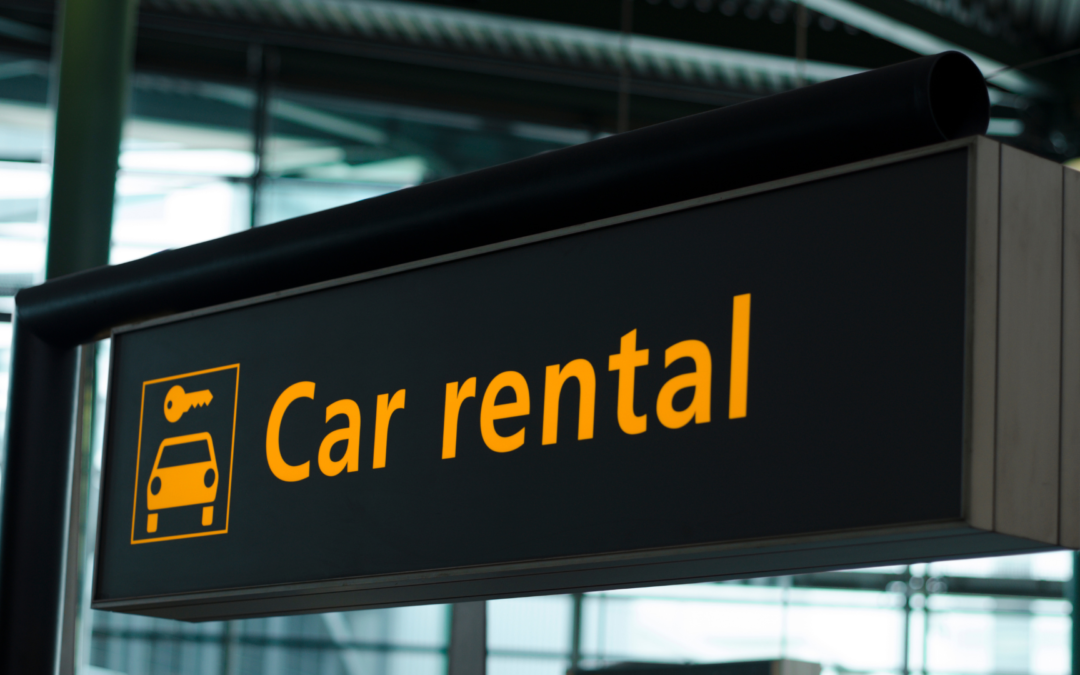
by Admin | Apr 26, 2024 | News
Welcome to your ultimate guide to renting a car at Airport in Costa Rica Liberia. Whether you’re a first-time visitor or a seasoned traveler to this beautiful country, having your wheels is the best way to explore all that Costa Rica has to offer. With breathtaking beaches, lush rainforests, and charming towns, renting a car gives you the freedom to go wherever you please and create your itinerary.
At Liberia Airport, you’ll find a variety of car rental companies that can cater to your specific needs. From famous international chains to local providers, you’ll have plenty of options to choose from. But with so many choices, it’s essential to know what to consider before making your decision.
In this comprehensive guide, we’ll walk you through the entire process of renting a car at Liberia Airport. We’ll cover everything from comparing prices and understanding insurance options to navigating the local roads and adhering to the local traffic laws. We’ll also provide tips and recommendations to ensure a smooth and stress-free car rental experience.
So grab your sunglasses, buckle up, and get ready to embark on a memorable adventure in Costa Rica with your rented wheels!
Why Renting a Car at Airport in Costa Rica Liberia is a Good Idea
Renting a car at Liberia Airport offers numerous advantages that can enhance your Costa Rican vacation. One of the main benefits is the convenience it provides. As soon as you step off the plane, you’ll have the option to pick up your rental car and hit the road. This eliminates the need to rely on public transportation or expensive taxi services.
Having a rental car also allows you to explore at your own pace. You can visit popular tourist destinations or venture off the beaten path to discover hidden gems. With a car, you have the flexibility to make spontaneous stops and detours, taking in the stunning landscapes and natural wonders that Costa Rica has to offer.
Furthermore, renting a car can be a cost-effective option, especially if you’re traveling with a group or planning to visit multiple locations. Splitting the rental costs among several people can significantly reduce your expenses when compared to booking separate transportation for each leg of your journey.
Things to Consider Before Renting a Car
Before you start searching for the perfect rental car, there are a few essential factors to consider. First and foremost, think about the size and type of vehicle you’ll need. If you’re traveling solo or as a couple, a compact car may be sufficient. However, if you have a larger group or plan to bring along surfboards or other equipment, you’ll want to opt for a larger vehicle or even an SUV.
It’s also crucial to consider your budget. Car rental prices can vary significantly depending on the company, the duration of your rental, and the type of vehicle you choose. Take some time to research different providers and compare prices to ensure you’re getting the best deal possible. Keep in mind that additional fees, such as airport surcharges or insurance costs, may also impact the overall price.
Another important consideration is the type of roads you’ll encounter during your trip. While significant highways in Costa Rica are generally well-maintained, some more minor roads and rural areas may have rough terrain or unpaved surfaces. If you plan to explore off the beaten path, it’s advisable to rent a car with higher clearance or even a 4×4 vehicle to ensure a comfortable and safe driving experience.
Choosing the Right Car Rental Company
At Liberia Airport in Costa Rica, you’ll find a wide range of car rental companies to choose from. It’s essential to select a reputable provider that suits your needs and preferences. One way to narrow down your options is to read reviews and gather feedback from previous customers. Websites and travel forums can be valuable resources for finding reliable and trustworthy rental companies.
Consider factors such as customer service, vehicle condition, and the availability of additional services. Some companies offer perks like free shuttle services to and from the airport or the option to drop off the car at a different location, which can be convenient if you’re planning a one-way trip.
Additionally, check if the rental company provides 24/7 roadside assistance. This can give you peace of mind, knowing that help is just a phone call away in case of any unexpected mishaps or breakdowns during your journey.
Understanding the Rental Process at Liberia Airport
Renting a car at Liberia Airport in Costa Rica is straightforward, but it’s essential to be familiar with the necessary steps to ensure a smooth experience. Most rental companies have their counters located in the airport’s arrivals hall, making it convenient to pick up your vehicle upon arrival.
To streamline the process, it’s advisable to make a reservation in advance. This not only guarantees the availability of your preferred vehicle but also allows you to compare prices and secure any promotional discounts. When making your reservation, provide the rental company with your flight details so they can arrange for a representative to be present when you arrive.
When picking up your rental car, be prepared to present your valid driver’s license, a credit card for the deposit, and any additional identification documents required by the rental company. It’s crucial to carefully review the rental agreement and ensure you understand all the terms and conditions before signing.
Rental Car Insurance Options and Coverage
When renting a car in Costa Rica, it’s essential to understand the insurance options and coverage available to you. While basic liability insurance is typically included in the rental price, it may not provide sufficient coverage in case of an accident or damage to the rental vehicle. To protect yourself and minimize potential costs, it’s recommended to consider additional insurance coverage, such as Collision Damage Waiver (CDW) or Loss Damage Waiver (LDW). These options can reduce your financial liability in case of an accident or damage to the rental car.
Another insurance option to consider is Supplemental Liability Insurance (SLI). This coverage can provide additional protection against claims made by third parties in the event of an accident. It’s important to carefully review the terms and conditions of each insurance option and consult with the rental company if you have any questions or concerns.
Driving Tips and Regulations in Costa Rica
Before hitting the road, it’s essential to familiarize yourself with the local driving rules and regulations in Costa Rica. The following tips will help ensure a safe and enjoyable driving experience:
- Speed Limits: The maximum speed limit on highways is typically 80 km/h (50 mph), but it may vary depending on the area. In urban areas, the speed limit is usually 40 km/h (25 mph). Always obey the posted speed limits and adjust your speed according to road conditions.

- Seat Belts: It’s mandatory for all occupants of a vehicle to wear seat belts. Ensure that everyone in the car is buckled up before you start driving.
- Traffic Signals: Pay close attention to traffic signals, including stop signs, yield signs, and traffic lights. Be aware that some intersections may have unmarked stop signs, so approach with caution.
- Road Conditions: While major highways are generally well-maintained, you may encounter potholes or rough patches on smaller roads. Exercise caution, especially during rainy seasons, as roads can become slippery.
- Wildlife: Keep an eye out for wildlife, particularly in rural areas and near national parks. Animals like monkeys, sloths, and even iguanas may cross the road unexpectedly. Drive slowly and be prepared to stop if necessary.
- Parking: When parking your rental car, be mindful of any parking restrictions or designated parking areas. Avoid leaving any valuables in the car, and always lock it when unattended.
By following these driving tips and regulations, you can ensure a safe and enjoyable journey while exploring the beautiful landscapes of Costa Rica.
Must-Visit Destinations and Attractions near Liberia Airport
Airport in Costa Rica Liberia serves as a gateway to some of Costa Rica’s most stunning destinations. Here are a few must-visit places near the airport that you can explore with your rental car:
- Rincon de la Vieja National Park: Located just a short drive from Liberia Airport, this national park is home to an active volcano, hot springs, and beautiful hiking trails. Explore the diverse flora and fauna, take a dip in the rejuvenating hot springs, and witness the volcanic activity up close.
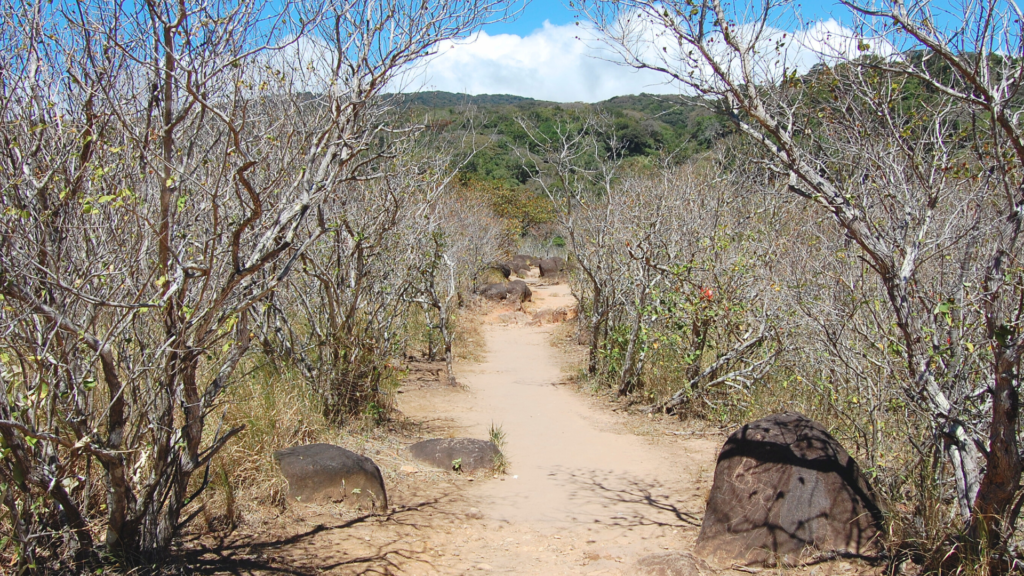
- Playa Hermosa: This picturesque beach is renowned for its pristine beauty and tranquil atmosphere. Relax on the golden sand, swim in the crystal-clear waters, or try your hand at surfing. Playa Hermosa offers a serene getaway from the bustling tourist areas.
- Papagayo Peninsula: Known for its luxurious resorts and stunning beaches, the Papagayo Peninsula is a must-visit destination for those seeking a blend of relaxation and adventure. Enjoy water sports, snorkeling, or unwind on the idyllic beaches surrounded by lush greenery.
- Palo Verde National Park: Embark on a riverboat tour through Palo Verde National Park and witness Costa Rica’s incredible biodiversity. Marvel at the diverse bird species, spot crocodiles and immerse yourself in the breathtaking natural beauty of this protected wetland.
These are just a few of the many incredible destinations near Liberia Airport that you can explore with the freedom of your rental car. Take the time to plan your itinerary and discover the hidden gems that Costa Rica has to offer.
Additional Services and Amenities offered by Car Rental Companies
Aside from the standard rental services, many car rental companies at Liberia Airport in Costa Rica offer additional services and amenities to enhance your experience. These may include:
- GPS Navigation: Opt for a rental car with built-in GPS navigation or request a portable GPS device to help you navigate unfamiliar roads and find your way to your desired destinations.
- Child Car Seats: If you’re traveling with young children, most rental companies offer child car seats for added safety and convenience. Make sure to reserve these in advance to ensure availability.
- Mobile Wi-Fi: Stay connected on the go by renting a portable Wi-Fi device. This allows you to access the internet, use navigation apps, and stay in touch with loved ones throughout your journey.
- Roadside Assistance: Confirm whether the rental company provides 24/7 roadside assistance in case of emergencies or breakdowns. Knowing that help is just a phone call away can provide peace of mind during your trip.
These additional services and amenities can further enhance your car rental experience and make your journey through Costa Rica even more enjoyable.
Conclusion and Final Thoughts
Renting a car at Liberia Airport in Costa Rica is a fantastic way to explore the country’s natural beauty and immerse yourself in its vibrant culture. With the freedom and flexibility that a rental car provides, you can create your own itinerary and discover hidden gems off the tourist path.
Before renting a car, consider factors such as the size and type of vehicle you’ll need, your budget, and the road conditions you may encounter during your trip. Choose a reputable car rental company that offers the services and amenities that suit your preferences.
Familiarize yourself with the local driving rules and regulations, and always prioritize safety on the road. Take advantage of your rental car to visit must-see destinations near Liberia Airport in Costa Rica, such as Rincon de la Vieja National Park and Playa Hermosa.
Lastly, take advantage of the additional services and amenities offered by car rental companies to enhance your overall experience. Whether it’s GPS navigation, child car seats, or mobile Wi-Fi, these extras can make your journey even more convenient and enjoyable.
So buckle up, embrace the adventure, and get ready for an unforgettable road trip through Costa Rica!

by Admin | Dec 13, 2023 | News
Are you thinking about relocating to Costa Rica? Get ready to embrace the Pura Vida lifestyle! Known for its stunning beaches, lush rainforests, and a commitment to sustainability, Costa Rica offers a paradise-like setting for those seeking a slower pace of life. In this comprehensive guide, we’ll take you through everything you need to know to make your move to Costa Rica a smooth and exciting transition.
From obtaining the necessary visas and permits to finding the perfect place to live, we’ll provide you with all the essential information you need to start your new life in this tropical haven. As we delve into the unique culture and vibrant community of Costa Rica, you’ll discover why the phrase “Pura Vida” is more than just a saying – it’s a way of life.
Whether you’re interested in learning about the country’s healthcare system, education options for your children, or the best activities to immerse yourself in the local culture, this guide has got you covered. So, pack your bags and get ready to embark on a new adventure as we uncover the magic of the Pura Vida lifestyle in Costa Rica.
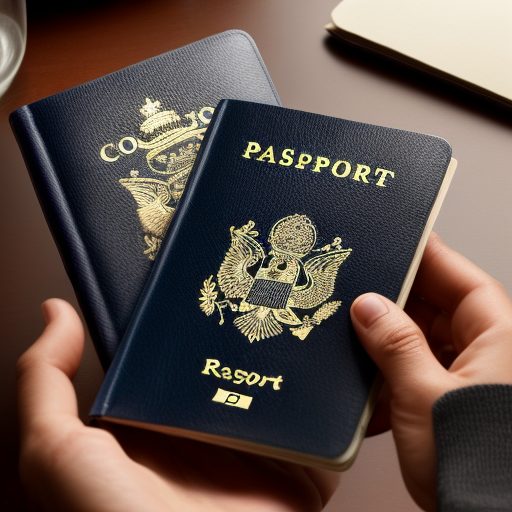
Reasons to consider relocating to Costa Rica
Are you thinking about relocating to Costa Rica? Get ready to embrace the Pura Vida lifestyle! Known for its stunning beaches, lush rainforests, and a commitment to sustainability, Costa Rica offers a paradise-like setting for those seeking a slower pace of life. In this comprehensive guide, we’ll take you through everything you need to know to make your move to Costa Rica a smooth and exciting transition.
From obtaining the necessary visas and permits to finding the perfect place to live, we’ll provide you with all the essential information you need to start your new life in this tropical haven. As we delve into the unique culture and vibrant community of Costa Rica, you’ll discover why the phrase “Pura Vida” is more than just a saying – it’s a way of life.
Whether you’re interested in learning about the country’s healthcare system, education options for your children, or the best activities to immerse yourself in the local culture, this guide has got you covered. So, pack your bags and get ready to embark on a new adventure as we uncover the magic of the Pura Vida lifestyle in Costa Rica.
Understanding the culture and customs of Costa Rica
Costa Rica is a dream destination for many, and there are plenty of compelling reasons to consider relocating to this tropical paradise. Firstly, the country boasts a stunning natural landscape with pristine beaches, lush rainforests, and breathtaking mountains. Whether you’re a nature enthusiast or enjoy spending time outdoors, Costa Rica has something to offer everyone.
In addition to its natural beauty, Costa Rica is known for its commitment to sustainability and environmental conservation. The country has made significant strides in renewable energy, and its dedication to preserving its natural resources is evident in its national parks and protected areas. Living in Costa Rica allows you to be part of a community that values and prioritizes sustainability.
Another reason to consider relocating to Costa Rica is the high quality of life. The country consistently ranks highly on the Happy Planet Index, which measures well-being and environmental impact. Costa Ricans, known as Ticos, are known for their friendly and laid-back nature, contributing to the overall sense of happiness and contentment in the country. So, if you’re looking for a place where you can slow down and enjoy life, Costa Rica may be the perfect fit.
Choosing the right location in Costa Rica
Before relocating to Costa Rica, it’s essential to familiarize yourself with the country’s culture and customs. Costa Ricans are known for their warm and welcoming nature, and the phrase “Pura Vida” is a central part of the national identity. Pura Vida, which translates to “pure life,” represents a laid-back and optimistic attitude towards life.
The Ticos value family, community, and spending time with loved ones. It’s common for families to gather for meals and celebrations, and the sense of community is strong throughout the country. As a newcomer, embracing the Pura Vida lifestyle means immersing yourself in the local culture, participating in community events, and forging connections with your neighbors.
Additionally, learning Spanish is highly recommended when relocating to Costa Rica. While many locals speak English, being able to communicate in Spanish will significantly enhance your experience and allow you to connect more deeply with the local community. Taking language classes or immersing yourself in Spanish-speaking environments can help you become proficient in the language.
Navigating the legal and visa requirements for relocation
Costa Rica offers a variety of diverse regions, each with its unique charm. When choosing the right location for your relocation, it’s essential to consider factors such as climate, amenities, and proximity to services.
The Central Valley, which includes the capital city of San Jose, is a popular choice for expats due to its mild climate and access to healthcare and educational facilities. If you’re seeking a beach lifestyle, the Pacific Coast and the Caribbean Coast offer stunning beachfront communities where you can enjoy the sun, surf, and laid-back atmosphere.
For those who prefer a cooler climate and mountainous landscapes, the Central Highlands, including areas like Monteverde and Arenal, provide a refreshing escape from the tropical heat. These regions are also known for their ecotourism opportunities and abundant wildlife.
When deciding on a location, it’s essential to visit different areas and get a feel for the local vibe. Renting a property before making a long-term commitment can give you a better understanding of whether a particular place suits your lifestyle and preferences.
Finding housing and cost of living in Costa Rica
Relocating to Costa Rica requires navigating the legal and visa requirements set by the government. The specific requirements can vary depending on your country of origin, but some general guidelines apply to most individuals.
For short-term visits, many nationalities can enter Costa Rica without a visa and stay for up to 90 days. However, for long-term stays, obtaining a visa is necessary. The most common long-term visa option is the Rentista visa, which requires proof of a steady income from a reliable source.
Other visa options include the Pensionado visa for retirees and the
Investor visa for those looking to start a business in Costa Rica.
It’s essential to consult with a reputable immigration lawyer or contact the nearest Costa Rican embassy or consulate to ensure you have the most up-to-date information on visa requirements. Working with a professional can help simplify the process and ensure you meet all the necessary criteria.
Healthcare and education options in Costa Rica
Finding the perfect place to live in Costa Rica requires careful consideration of various factors, including your budget, desired amenities, and location preferences. Rental options range from apartments and condominiums to houses and villas.
The cost of living in Costa Rica can vary depending on the location and lifestyle you choose. While some areas, particularly tourist hotspots, can be more expensive, there are also plenty of affordable options available. It’s essential to research and compare prices in different regions to find a balance between your budget and your desired lifestyle.
When searching for housing, working with a reputable real estate agent can significantly simplify the process. They can help you navigate the local rental market, negotiate lease terms, and ensure you find a property that meets your needs.
Employment and business opportunities in Costa Rica
Costa Rica is renowned for its high-quality healthcare system, which is accessible to both residents and foreigners. The country has a mix of public and private healthcare facilities, offering a wide range of services. It’s advisable to obtain health insurance that provides coverage for medical expenses in Costa Rica, as this will give you peace of mind and ensure you receive the necessary care in case of an emergency.
Education is also a top priority in Costa Rica, with a strong emphasis on providing quality education to its citizens. The country has a robust public education system, and there are also private and international schools available. If you have children, it’s essential to research the education options in your chosen area and consider factors such as curriculum, language of instruction, and extracurricular activities.
Tips for a smooth transition and adjusting to life in Costa Rica
While many expats choose to relocate to Costa Rica for retirement or a change in lifestyle, there are also employment and business opportunities available. The country has a growing economy and is attractive to international businesses due to its stable political environment and educated workforce.
If you’re considering working in Costa Rica, it’s essential to research the job market and understand the requirements for obtaining a work permit. Networking, both online and in-person, can also be beneficial in finding employment opportunities and connecting with professionals in your field.
For those interested in starting a business, Costa Rica offers a supportive environment for entrepreneurs. The government has implemented measures to facilitate business growth, and various industries, such as tourism, agriculture, and technology, present opportunities for investment and entrepreneurship.
Conclusion: Embracing the Pura Vida lifestyle in Costa Rica
Relocating to a new country can be both exciting and challenging. To ensure a smooth transition and help you adjust to life in Costa Rica, consider the following tips:
- Learn the language: While many locals speak English, learning Spanish will significantly enhance your ability to communicate and integrate into the local community.
- Embrace the Pura Vida lifestyle: Adopting the laid-back and optimistic attitude of the Costa Ricans will help you settle into your new surroundings and make the most of your experience.
- Connect with the expat community: Joining expat groups and online communities can provide valuable support and advice during your transition.
- Explore the country: Take the time to explore different regions and immerse yourself in the diverse landscapes, culture, and traditions Costa Rica has to offer.
- Be patient: Adjusting to a new country takes time, and there may be challenges along the way. Embrace the journey and remain open-minded as you adapt to your new life.

by Admin | Jan 26, 2023 | News
Traveling to Costa Rica can be an exciting and memorable experience, but it’s essential to be prepared for what to expect at the country’s international airports to ensure a smooth start to your trip. Costa Rica has two major international airports, Juan Santamaría International Airport and Guanacaste International Airport, and both airports offer various services to make your arrival and departure as seamless as possible.

Navigating the Juan Santamaria International Airport
Juan Santamaría International Airport, also known as San José International Airport, is the country’s largest and busiest airport. It’s located about 18km outside San José and serves as a hub for major international carriers such as American Airlines, Delta, and United. It also provides services to smaller regional airlines. The airport has two terminals, the South Terminal for domestic flights and the North Terminal for international flights. The North Terminal is where most international flights arrive and depart, and it’s also where you’ll find most of the airport’s services and amenities. Inside the terminal, you’ll find various restaurants, cafes, duty-free, and souvenir shops. In addition, there are banks, ATMs, a post office, and a pharmacy.
For travelers who need to rent a car, there are several car rental agencies located in the airport’s parking lot, and they offer a variety of vehicles to suit different needs and budgets. If you prefer a private airport transfer, we provide our service outside the terminal, where you can catch a ride to your destination. Several hotels are near the airport for travelers who have a layover or need to stay overnight before continuing their journey.
Navigating the Guanacaste International Airport
Guanacaste International Airport, also known as Liberia International Airport, is located in Guanacaste Province and is the closest airport to popular beach towns such as Tamarindo and Playa Hermosa. It’s the second busiest airport in Costa Rica and serves a variety of airlines, including Southwest Airlines, JetBlue, American Airlines, and Air Canada. The airport is smaller than San José International Airport, but it still offers various services and amenities for travelers. Inside the terminal, you’ll find a few restaurants and cafes, a duty-free shop, and a souvenir shop. Banks, ATMs, and car rental agencies are also located outside the terminal.
Preparing for Your Arrival: Necessary Documents and Payment
When flying into either of Costa Rica’s international airports, it’s essential to have all the necessary documents ready. You’ll need to present your passport, visa (if applicable), and a valid form of payment. In addition, travelers must pay a departure tax, which is currently $29 per person. This tax can be paid in cash or by credit card, and it’s usually collected as you check in for your flight or at the departure gate.
In addition to the standard airport services, both airports offer a range of additional amenities to make your arrival and departure as comfortable as possible. For example, both airports have car rental agencies, ATMs, and currency exchange services. If you need to exchange money, you’ll find currency exchange booths in the terminal, which offer competitive exchange rates. In addition, several hotels are near both airports for travelers who have a layover or need to stay overnight before continuing their journey.
Ensuring a Smooth Start to Your Trip to Costa Rica.
It’s also important to remember that Costa Rica is tropical, and the weather can be unpredictable. So, make sure you’re prepared for any delays or changes in your flight schedule. It’s common for flights to be delayed or canceled due to bad weather, so it’s a good idea to have a backup plan in case of such eventualities.
In conclusion, by taking the time to research and prepare for your trip, you can make sure your arrival in Costa Rica.












